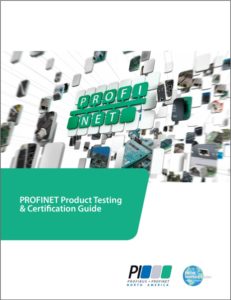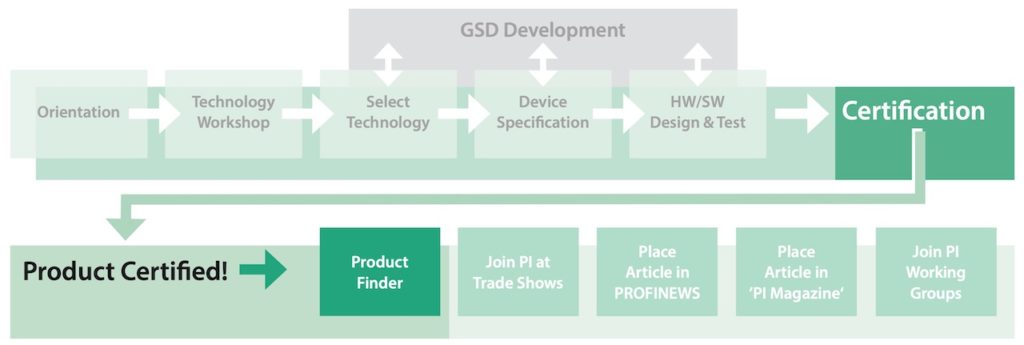 PI North America, the non-profit member-supported organization for PROFIBUS, PROFINET, IO-Link, and omlox technologies in North America, is excited to introduce a comprehensive guide for PROFINET Product Testing and Certification.
PI North America, the non-profit member-supported organization for PROFIBUS, PROFINET, IO-Link, and omlox technologies in North America, is excited to introduce a comprehensive guide for PROFINET Product Testing and Certification.
The guide is aimed toward device manufacturers and solution providers looking to implement PROFINET in devices, controllers, or machines. By reading this document, device manufacturers will learn how testing and certification work, how to prepare for testing, and how to get a product certified. Also, the guide contains suggestions and resources to complete the certification process with ease.
PI North America collaborated with the PROFI Interface Center (PIC), a PROFIBUS and PROFINET International (PI) accredited Test Lab located in North America, to produce this comprehensive resource.
“Over the last few months, we’ve seen a surge in demand from device manufacturers seeking to certify their PROFINET-enabled products. The creation of the PROFINET Product Testing and Certification Guide is a direct result of this. As more automation component suppliers join our ranks, it is imperative we streamline the certification process for them. Together with the guide, we encourage vendors to reach out to us to obtain expert support and resources for the entire product development process,” says Michael Bowne, Executive Director at PI North America.
The complete PROFINET Product Testing and Certification guide is publicly available for download at the PI North America website: https://us.profinet.com/documentation/profinet-product-testing-certification-guide/
 The guide follows a Question and Answer format. A sampling of which is shown below:
The guide follows a Question and Answer format. A sampling of which is shown below:
What is PROFINET Certification?
Certification is the process by which a PROFINET product is tested in a PI Test Lab (PITL) for conformance and, upon successful completion of the testing, issued a certificate by PROFIBUS and PROFINET International (PI).
Products are certified to verify the correct behavior of communication according to IEC 61158 and IEC 61784. Specifically, PROFINET devices are tested for the correct implementation of the following items:
- Hardware interface
- PROFINET mandatory and optional functionality
- Reaction on faulty behavior
- Robustness against netload
- Proper operation in a reference automation environment
- State machines
- GSD file
Certification is mandatory for PROFINET devices and controllers. Each product must be certified according to its Conformance Class. Also, some additional PROFINET features, such as the PROFIsafe and PROFIenergy Application Profile, require certification.
What about passive components?
Passive components include infrastructure components like switches, cables, and connectors, and do not require certification. An exception would be if a switch also functions as a PROFINET device, and has its own GSD file, in which case certification is required.
For passive PROFINET components, the conformity must be declared by the manufacturer of the product. These products can then be added to the list of PROFINET Passive Network Components posted on the PI website.
What about optional features?
PROFINET allows for several optional features such as Media Redundancy Protocol (MRP), Isochronous Real Time (IRT), or Fast Start-Up (FSU). If a device supports them as defined in its GSD file, then these optional features must also be certified to verify compliance.
Does PI allow self-certification?
PI does not allow product self-certification. PROFINET components must be tested at a PITL and certified by PI before product launch.
